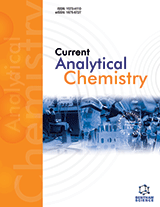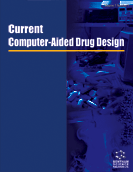摘要
Sigma-2受体是一种广泛分布的蛋白,它可以介导细胞增殖并涉及肿瘤发病机制。光亲和标记技术证实其分子大小约为18kDa。近期研究表明sigma-2受体可以调节细胞内钙离子浓度、多巴胺神经传递和可卡因诱导的成瘾性。一些sigma-2受体配体(ditolylguanidine、afobazole等)显示神经保护作用。 虽然sigma-2受体还没有被克隆,但是在过去10年已经证实成千上万的sigma-2受体配体显示了高亲和性和高选择性。本综述中,我们主要关注这一系列的高选择性的sigma-2受体配体,他们的神经心理学作用及追踪中枢神经系统中sigma-2受体的分子探针。
关键词: 上瘾,钙,神经保护,探针,sigma-2受体
Current Medicinal Chemistry
Title:Sigma-2 Receptor Ligands: Neurobiological Effects
Volume: 22 Issue: 8
Author(s): Lin Guo and Xuechu Zhen
Affiliation:
关键词: 上瘾,钙,神经保护,探针,sigma-2受体
摘要: Sigma-2 receptor is a widely distributed protein, which can modulate cell proliferation and involved in the pathogenesis of tumor. Photoaffinity labelling techniques testified that its molecular size is about 18 kDa. Recent studies indicated that sigma-2 receptor modulates the cytosolic Ca2+ concentration, dopaminergic transmission, and cocaine-induced addiction behavior. Some sigma-2 receptor ligands (ditolylguanidine, afobazole, etc) display the neuroprotective effect. Although sigma-2 receptor hasn’t been cloned, tens of sigma-2 receptor ligands, which demonstrate high affinity and selectivity, have been identified in the past decade. In this review, we mainly focus on these series of selective sigma-2 receptor ligands, their neuropsychological effects, and molecular probes for tracing sigma-2 receptors in central nervous system.
Export Options
About this article
Cite this article as:
Lin Guo and Xuechu Zhen , Sigma-2 Receptor Ligands: Neurobiological Effects, Current Medicinal Chemistry 2015; 22 (8) . https://dx.doi.org/10.2174/0929867322666150114163607
| DOI https://dx.doi.org/10.2174/0929867322666150114163607 |
Print ISSN 0929-8673 |
| Publisher Name Bentham Science Publisher |
Online ISSN 1875-533X |
 101
101 9
9
- Author Guidelines
- Bentham Author Support Services (BASS)
- Graphical Abstracts
- Fabricating and Stating False Information
- Research Misconduct
- Post Publication Discussions and Corrections
- Publishing Ethics and Rectitude
- Increase Visibility of Your Article
- Archiving Policies
- Peer Review Workflow
- Order Your Article Before Print
- Promote Your Article
- Manuscript Transfer Facility
- Editorial Policies
- Allegations from Whistleblowers
- Announcements
Related Articles
-
Tumor Necrosis Factor: Renaissance as a Cancer Therapeutic?
Current Cancer Drug Targets New Framework for the Discovery of PRC2 Inhibitors: Epigenetic Drugs
Current Drug Targets Heat Shock Proteins as Prognostic Markers of Cancer
Current Cancer Drug Targets The Use of Immunotherapy to Treat Metastatic Breast Cancer
Current Medicinal Chemistry Production of Alpha Emitters for Targeted Alpha Therapy
Current Radiopharmaceuticals The Current View on the Helicase Activity of RNA Helicase A and Its Role in Gene Expression
Current Protein & Peptide Science Significance of Various Experimental Models and Assay Techniques in Cancer Diagnosis
Mini-Reviews in Medicinal Chemistry Inhibitors of the Proteolytic Activity of Urokinase Type Plasminogen Activator
Current Pharmaceutical Design Dietary Antioxidants as Potential Pharmacological Agents for Ischemic Stroke
Current Medicinal Chemistry Tissue Elastography: Advances in Imaging the Mechanical Properties of Tissue
Recent Patents on Electrical Engineering Basic and Clinical Research Against Advanced Glycation End Products (AGEs): New Compounds to Tackle Cardiovascular Disease and Diabetic Complications
Recent Advances in Cardiovascular Drug Discovery (Discontinued) The Biological Effects of Diagnostic Cardiac Imaging
Current Pharmaceutical Design Interleukin-15 in Gene Therapy of Cancer
Current Gene Therapy Ultra-deformable Liposomes as Flexible Nanovesicular Carrier to Penetrate Versatile Drugs Transdermally
Nanoscience & Nanotechnology-Asia Angiogenesis and Hypoxia in Glioblastoma: A Focus on Cancer Stem Cells
CNS & Neurological Disorders - Drug Targets In Vitro and In Vivo Evaluation of [99mTc(CO)3]-Radiolabeled ErbB-2-Targeting Peptides for Breast Carcinoma Imaging
Current Radiopharmaceuticals Preparation and <I>In Vitro/Vivo</I> Evaluation of Folate-conjugated Pluronic F87-PLGA/TPGS Mixed Nanoparticles for Targeted Drug Delivery
Current Drug Delivery Formulation, Characterization and In vitro Cytotoxicity of 5-Fluorouracil Loaded Polymeric Electrospun Nanofibers for the Treatment of Skin Cancer
Recent Patents on Nanotechnology Progress of HDAC Inhibitor Panobinostat in the Treatment of Cancer
Current Drug Targets Multifunctional Materials for Cancer Therapy: From Antitumoral Agents to Innovative Administration
Current Organic Chemistry


























